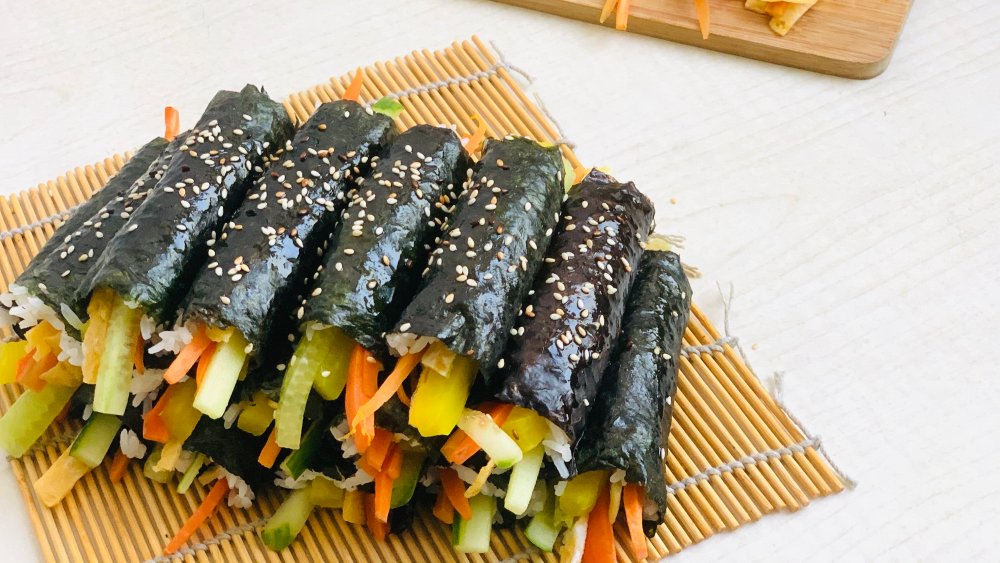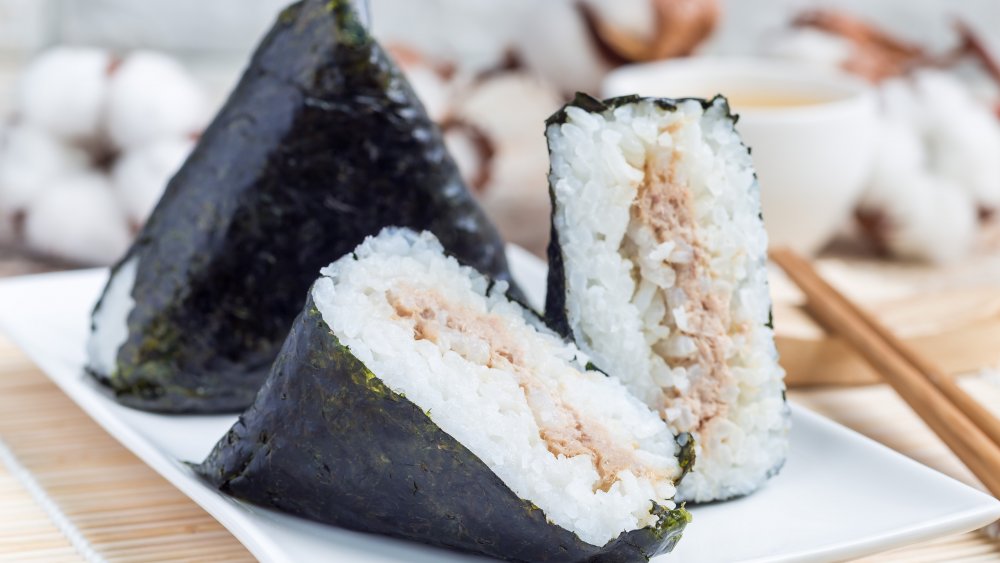The Real Difference Between Sushi And Kimbap
Sushi fans out there have probably heard about Korean kimbap (a.k.a. gimbap) by now. The name gimbap literally translates to seaweed sheet (gim) and cooked rice (bap). It looks very similar to traditional Japanese sushi, but with a few key differences, according to NDTV Food. Let's break it down.
Kimbap rice, which is usually brown or black, is mixed with sesame oil instead of the traditional vinegar that Japanese sushi uses. Kimbap also uses mostly cooked ingredients to include in its rolls, such as ham and cheese, canned tuna, bulgogi (marinated grilled beef), and kimchi, while Japanese sushi recipes favor raw fish. It's a popular snack in Korea, but if you have ingredients such as sesame oil, sushi rice, and nori sitting around in your pantry, you may even consider making some kimbap yourself (via Serious Eats). If you'd rather leave it to the professionals, there are Korean restaurants that offer the popular rolls in several varieties.
Types of kimbap that are available
Although chefs could put their own spin on kimbap, there are usually three main varieties of kimbap offered on Korean menus, according to NDTV Food: Chungmu Kimbap, which is a thin roll filled only with rice; Mayak Kimbap, a small vegetable-filled kimbap served with mustard and soy sauce; and Samgak Kimbap, a triangular-shaped kimbap.
In addition to the varieties mentioned, there's also a Nude kimbap, with the rice on the outside and seaweed inside, as well as a Chamchi kimbap, which has a sort of tuna salad rolled inside the steamed rice (via Hannaone.com). Since kimbap is usually served without sauce, all forms of Korean kimbap rolls are great for quick snacks and on-the-run meals. Feeling boxed in? You can make kimbap any way you choose. If you're a kimbap beginner, maybe you should start with the traditional varieties and expand your palate out from there.

